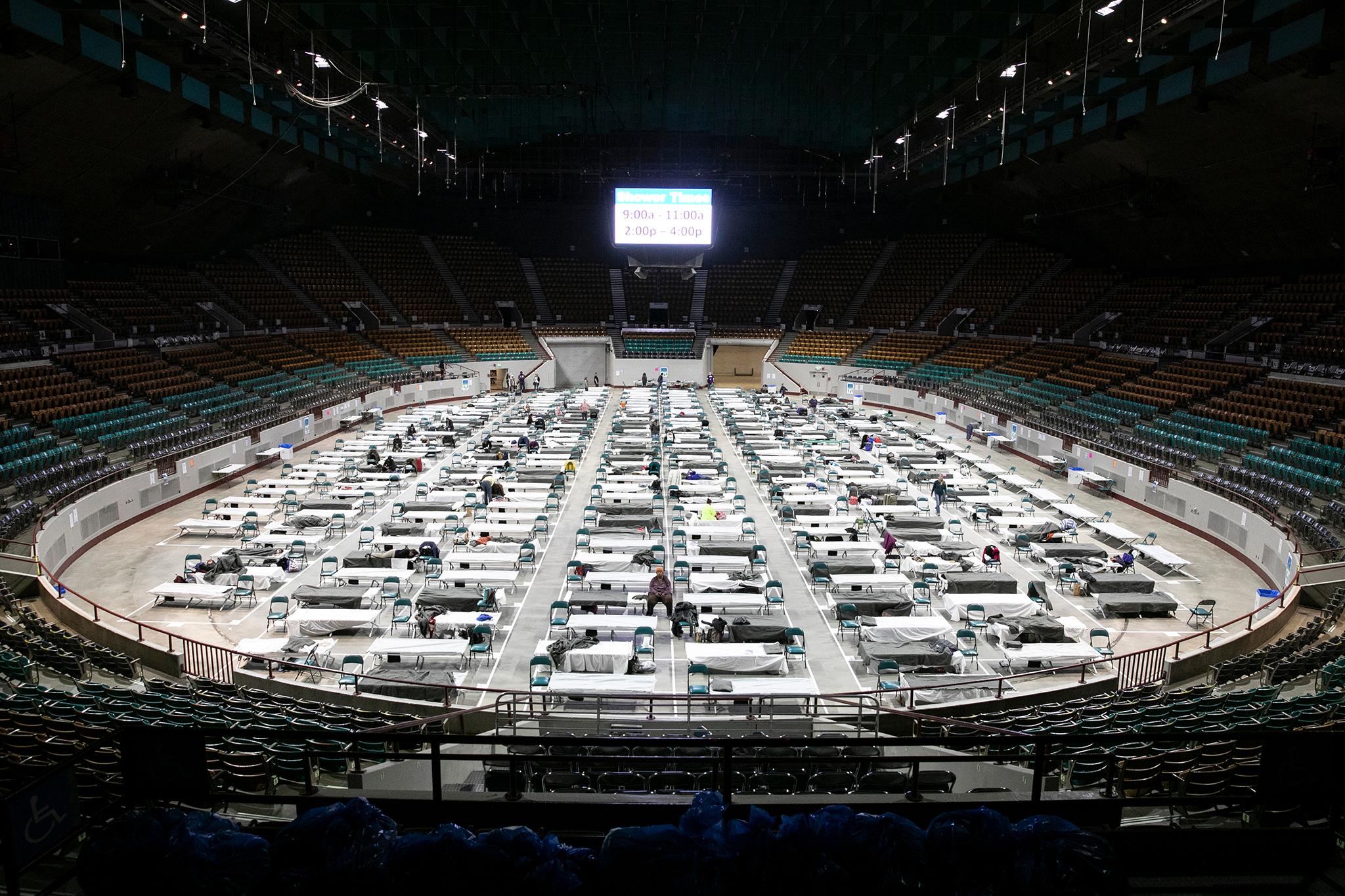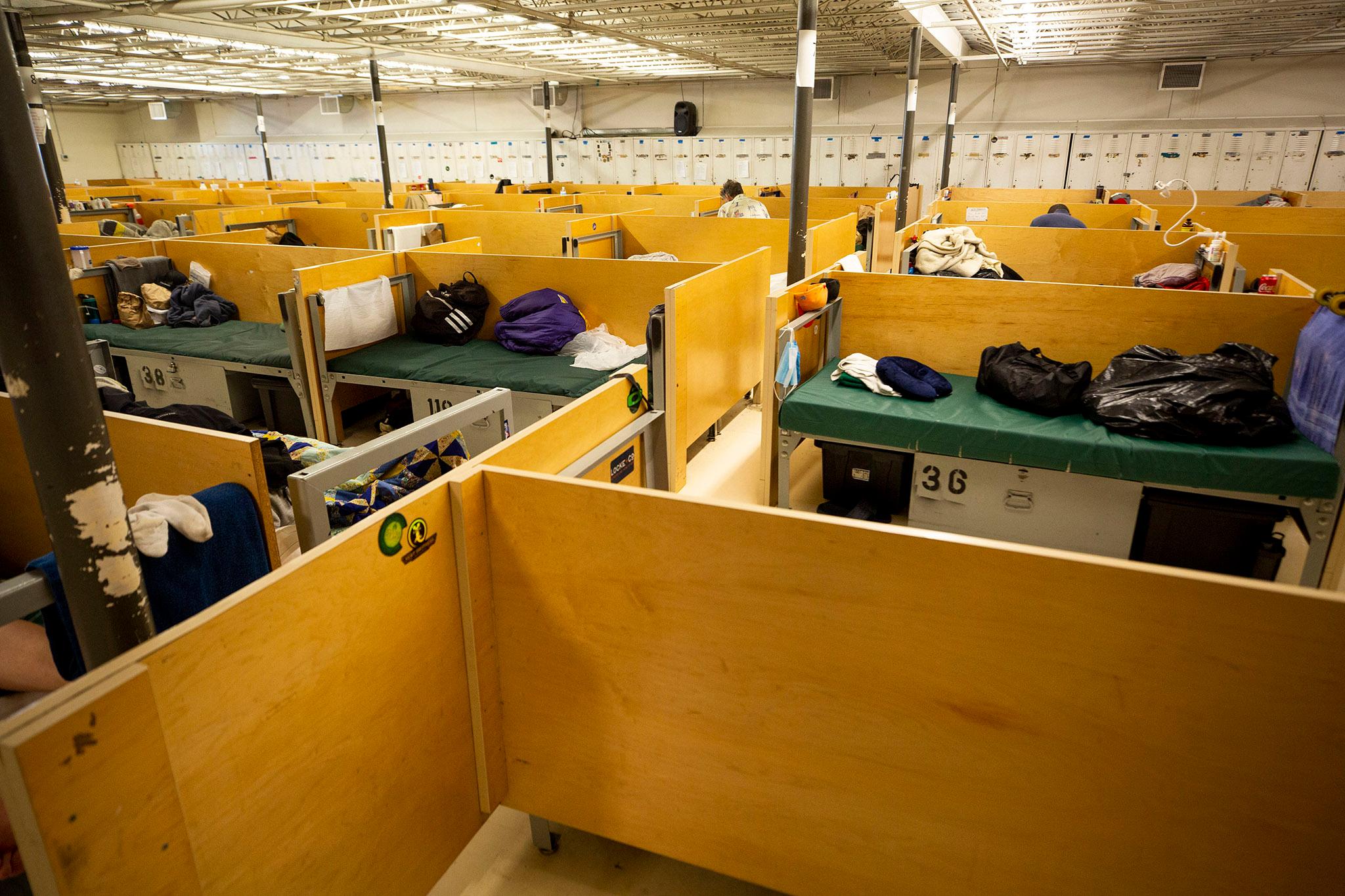When it came to COVID-19 rates, unhoused people living in encampments had fewer cases than those living in overnight shelters, according to a report in the journal Clinical Infectious Diseases.
The study took place early during the pandemic, from June 2 to July 28, 2020, and was based on the results of 823 COVID-19 RNA tests and 276 antibody tests conducted by Denver Health in both shelters and encampments. The data was collected at the request of the City of Denver. The report was authored by Sarah Rowan, a doctor with Denver Health and the University of Colorado Denver, and multiple epidemiologists and other public health experts working with the Centers for Disease Control and Prevention.
In fall of 2020, "looking back at results from summer, we were able to see a consistent pattern that the encampments had lower rates of current and past COVID cases than indoor shelters," said Rowan.
In shelters, 8.6% of the people tested positive; in encampments it was 2.5%. As for antibody tests, which indicate whether someone previously had COVID-19, 21.5% of people in shelters tested positive versus 8.7% in encampments.

"It wasn't a surprise in some ways," Rowan said.
After all, shelters are enclosed, often crowded spaces, where people share air for hours on end. The ventilation is rarely state of the art.
Encampments, in turn, are outdoors, with naturally occurring ventilation. Often, tents serve as an additional barrier for transmission. People often sleep and stay further apart.
"Our findings support the need for continuing assessment of mitigation strategies in shelters, increasing access to individual rooms and linkage to housing options for [people experiencing homelessness], and supporting people to remain in encampments when these options are not available," the authors wrote.
The Centers for Disease Control and Prevention policy has been that cities should quit sweeping encampments if individual emergency housing options like motel rooms aren't available. Doing otherwise pushes people away from services and treatment.
"The U.S. Centers for Disease Control and Prevention (CDC) has issued guidance that advises policymakers to allow individuals to remain in encampments to maintain connections with service providers and prevent spread of COVID-19," the paper states. "This guidance may be difficult for state and local governmental organizations to follow in the face of competing demands and uncertainty around COVID-19 prevalence in encampments."

Rowan's hope is that the research will help inform policymakers as they decide how to manage homelessness as COVID cases rise and fall.
Denver has been sweeping encampments against federal public health recommendations throughout much of the pandemic.
While proponents of the sweeps argue they will help get unhoused people into shelter, the paper noted that's not the case.
"The Colorado Coalition for the Homeless street outreach team has found that minimal overlap exists between sheltered and unsheltered communities in Denver, noting that when an encampment with approximately 80 people was disbanded in the summer of 2020, only 1 person accepted transportation to an overnight shelter," according to the study.

The city's decision to continue with the sweeps has been maintained amid an uptick in public pressure from groups like Citizens for a Safe and Clean Denver, who argue there is no reason any encampments should be allowed in the city when the city says it has enough shelter beds for every person experiencing homelessness.
Denver passed an urban camping ban ten years ago, and a vast majority of voters affirmed the law in 2019.
Many of Rowan's unhoused patients choose to stay in camps instead of shelters for various safety and social reasons.
Some people have been kicked out of shelters and can't return. Others have partners who can't stay with them. Drug users are wary of policies prohibiting drug use that would force them into cold-turkey withdrawal, which can be deadly, depending on the substance in question.
Avoiding a case of COVID-19 is yet another reason people feel safer on the streets.

Some of Rowan's patients have been able to access motel rooms and other individual emergency housing arrangements. But those options are far from universally available for unhoused people.
As a doctor, Rowan wants her patients who are experiencing homelessness to have solid information when deciding whether to stay in shelters or in encampments.
When it comes to encampments, it's hard to pinpoint the specific health risks, Rowan said. Yet in some cases, they are more dangerous than shelters. Incidents of interpersonal violence are higher. Tents catch on fire. There have been incidents of Hepatitis A outbreaks -- which she points out have occurred outside encampments, too. And syringes, left on the ground, might cause some concern, though, incidents of people getting an infection from a needle on the ground are not well documented.
Sanitation concerns do exist at encampments, though as Rowan explained, adding more public restrooms and trash disposal facilities would reduce that.
The shelters also have seen unique health concerns that don't exist at the same rate in encampments. Rowan pointed to Bartonella, also known as "trench fever," as a disease more common at overnight shelters.

She has had unhoused patients speak of their fears of violence in shelters and how their belongings have been stolen, though she also noted the shelters are working to increase safety.
"I think it's up to an individual to make their own safety assessment or cost-benefit assessment for where they feel safest," she said. "It's important to let people make informed decisions."
Rowan said the city is doing a good job trying to create more housing -- though that is far from an immediate fix. And she said the shelters have gone above and beyond creating greater social distancing within them to increase safety. Some, however, could do better when it comes to installing quality ventilation systems.
She's supportive of the Colorado Village Collaborative's Safe Outdoor Spaces program, which offers temporary housing in regulated and staffed encampments that offer services. Her team has offered COVID-19 testing at those spots.
"I don't think we ever got a positive in the safe outdoor spaces," she said.
But at the heart of better public health and addressing homelessness is the need to create not just safer tents or shelters but places for people to stay permanently. That's where people are safest.
"The main thing," she said, "is more affordable housing."











